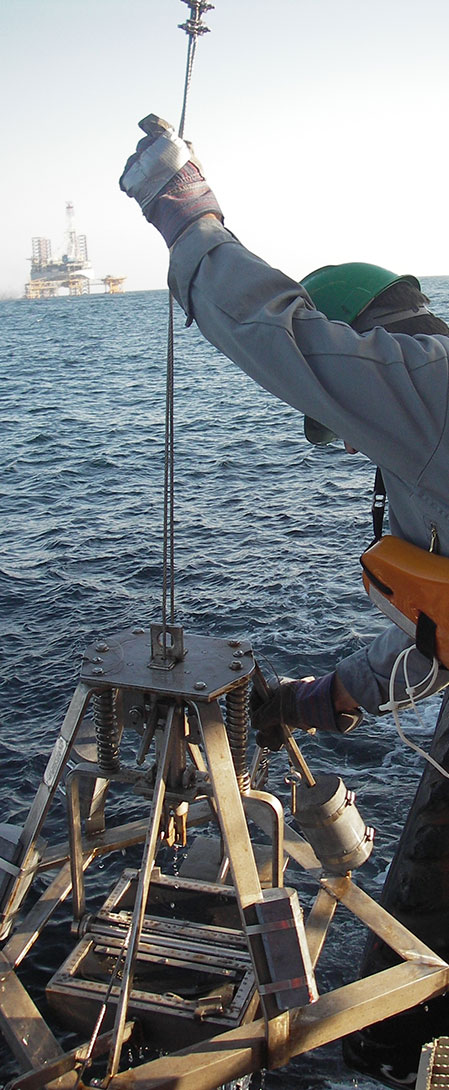CSA has been collecting, characterizing, and assessing sediments in marine and coastal environments since 1970. CSA has conducted hundreds of surveys in numerous countries that have included sediment collection and analysis. We have the capability and equipment necessary to collect sediment samples in water depths ranging from shallow coastal waters to full ocean depth.

Projects and Activities Supported
- Offshore oil & gas Environmental Baseline Surveys (EBSs) and monitoring
- Compliance monitoring
- Benthic habitat monitoring
- Environmental Impact Studies (EISs)
- Beach renourishment
- Ocean disposal of dredged material
- Habitat evaluations
- Toxicity testing and bioaccumulation studies
- Macroinvertebrate analyses of marine invertebrates
- Ground-truthing seabed mapping investigations
CSA employs two basic types of sediment collection sampling devices: grab samplers (used to collect surface and near-surface sediments) and sediment coring devices (used to collect a vertical column of the subsurface sediment and can be used to determine a temporal pattern of contamination). CSA owns and utilizes a wide range of sediment grabs (e.g. Smith McIntyre, Van Veen, and Ponar grabs) and core samplers (e.g. box, ROV push core, diver push core, multi- and mega-coring systems). Our sediment grabs and ancillary support equipment, such as winches and A-frames, are strategically located at our facilities worldwide. This extensive array of in-house sampling equipment allows us to cost effectively respond to a wide range of multidisciplinary environmental monitoring programs.


ROV Sediment Collection
CSA is one of a few firms that have extensive experience utilizing remotely operated vehicles (ROVs) to collect sediment samples. Using an ROV as a sampling platform offers distinct advantages, including the ability to visually target where the sample is collected, extremely accurate sample positioning, and the collection of “undisturbed” samples in deep water.
CSA has developed and utilized ROV-deployed sediment sampling systems on numerous projects. Two ROV sediment collection methods that CSA has frequently utilized are push cores and grab samplers. ROV push cores are specially designed plastic tubes that are pushed into the surface sediment by the ROV’s hydraulic manipulator. The push cores are fabricated with a “T” handle specifically designed to be manipulated with the ROV hydraulic arm. The recovered core sample is placed in a sample basket on the front of the ROV and is transported back to the ship.
The ROV-deployed grab sampler designed and fabricated by CSA is based on the Ekman grab sampler, which is used to collect infaunal samples where larger sediment volumes are required. In this application, the ROV is typically equipped with three grab samplers, each with a sediment surface area of 0.0625 m2. The ROV manipulator arm is used to deploy the grabs and collect the infaunal samples. Similar to the core samplers, once the sediment grabs are collected, the grabs are stowed in a specially designed rack on the front of the ROV and transported back to the ship.
It is critically important to have accurate positioning for any sampling activity. CSA uses a computerized navigation and positioning system (Hypack®) to accurately record the position of the collected sediment samples. Determining the position of the grab or core in deep water is problematic due to current and wind impacts. To deal with this issue, CSA utilizes an Ultra Short Baseline (USBL) positioning system that provides accurate horizontal positioning of the sediment sampler in deep water.

